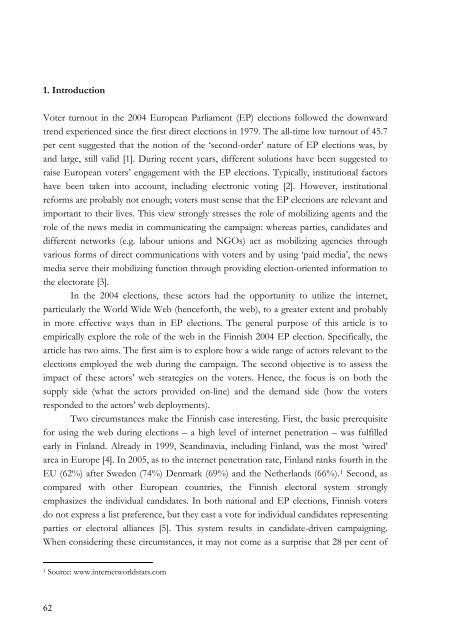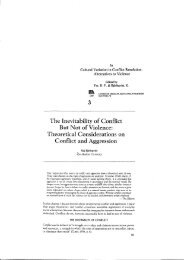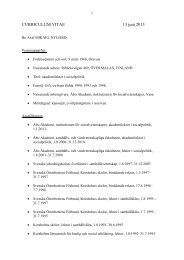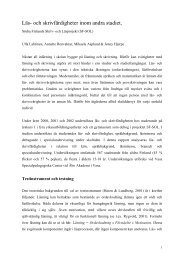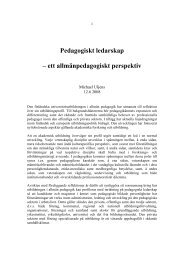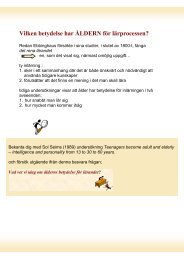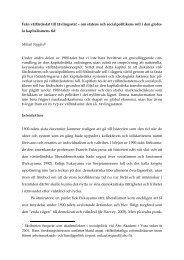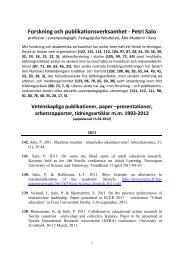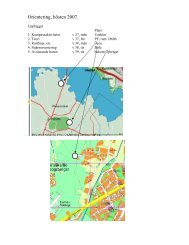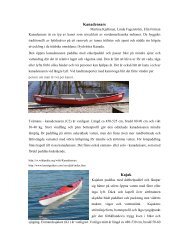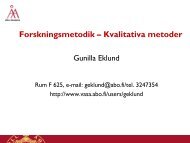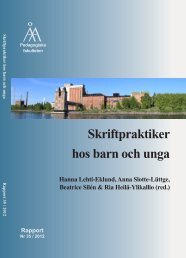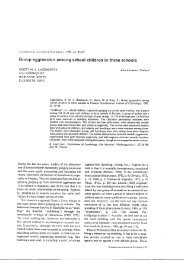Parties, Candidates and Citizens On-Line - Åbo Akademi
Parties, Candidates and Citizens On-Line - Åbo Akademi
Parties, Candidates and Citizens On-Line - Åbo Akademi
Create successful ePaper yourself
Turn your PDF publications into a flip-book with our unique Google optimized e-Paper software.
1. Introduction<br />
Voter turnout in the 2004 European Parliament (EP) elections followed the downward<br />
trend experienced since the first direct elections in 1979. The all-time low turnout of 45.7<br />
per cent suggested that the notion of the ‘second-order’ nature of EP elections was, by<br />
<strong>and</strong> large, still valid [1]. During recent years, different solutions have been suggested to<br />
raise European voters’ engagement with the EP elections. Typically, institutional factors<br />
have been taken into account, including electronic voting [2]. However, institutional<br />
reforms are probably not enough; voters must sense that the EP elections are relevant <strong>and</strong><br />
important to their lives. This view strongly stresses the role of mobilizing agents <strong>and</strong> the<br />
role of the news media in communicating the campaign: whereas parties, c<strong>and</strong>idates <strong>and</strong><br />
different networks (e.g. labour unions <strong>and</strong> NGOs) act as mobilizing agencies through<br />
various forms of direct communications with voters <strong>and</strong> by using ‘paid media’, the news<br />
media serve their mobilizing function through providing election-oriented information to<br />
the electorate [3].<br />
In the 2004 elections, these actors had the opportunity to utilize the internet,<br />
particularly the World Wide Web (henceforth, the web), to a greater extent <strong>and</strong> probably<br />
in more effective ways than in EP elections. The general purpose of this article is to<br />
empirically explore the role of the web in the Finnish 2004 EP election. Specifically, the<br />
article has two aims. The first aim is to explore how a wide range of actors relevant to the<br />
elections employed the web during the campaign. The second objective is to assess the<br />
impact of these actors’ web strategies on the voters. Hence, the focus is on both the<br />
supply side (what the actors provided on-line) <strong>and</strong> the dem<strong>and</strong> side (how the voters<br />
responded to the actors’ web deployments).<br />
Two circumstances make the Finnish case interesting. First, the basic prerequisite<br />
for using the web during elections – a high level of internet penetration – was fulfilled<br />
early in Finl<strong>and</strong>. Already in 1999, Sc<strong>and</strong>inavia, including Finl<strong>and</strong>, was the most ‘wired’<br />
area in Europe [4]. In 2005, as to the internet penetration rate, Finl<strong>and</strong> ranks fourth in the<br />
EU (62%) after Sweden (74%) Denmark (69%) <strong>and</strong> the Netherl<strong>and</strong>s (66%). 1 Second, as<br />
compared with other European countries, the Finnish electoral system strongly<br />
emphasizes the individual c<strong>and</strong>idates. In both national <strong>and</strong> EP elections, Finnish voters<br />
do not express a list preference, but they cast a vote for individual c<strong>and</strong>idates representing<br />
parties or electoral alliances [5]. This system results in c<strong>and</strong>idate-driven campaigning.<br />
When considering these circumstances, it may not come as a surprise that 28 per cent of<br />
1 Source: www.internetworldstats.com<br />
62


